


Latest results - 30/09/2000
On the images below, different plants have been grown and the results of the lighting simulation have
been accounted for during the process. The images themselves are not lighting simulations but just
rendered views of the models we have obtained by the growing technique:
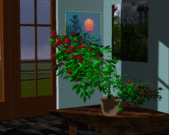 |
 |
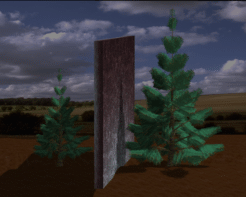 |
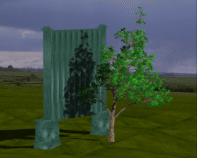 |
| heliotropism |
heliotropism |
External shadowing |
Self shadowing |
These images are screen shots of a lighting simulation computed in a scene build
from poplar trees of various ages. The total number of input polygons is 1.2 millions.
The algorithm only used 40MB of memory to compute the solution in 2 hours.
A classical clustering method would have required more than 1 Go of memory for
the same solution.
The following six images come from a growth 38 steps simulation of a plumeria lit by a
local light source. They correspond to steps 1,7,15,20,25,30,35 and 37. On the last image the model of
the plant as more than 400,000 input polygons and more than 30,000 leaves. The entire simulation took 2 days
to complete, 99% of the computation time being dedicated to the last 4 steps (35,36,37,38) which, due to
the exponential growth of the plant, contain many more structures than the first ones. At this stage,
the lighting simulation is not anymore the bottle neck of the simulation due to the efficiency of the
instanciation algorithm. The entire film can be accessed here in uncompressed
avi format.
Looking at these images, it appears clearly that the plant is influenced by the light source both in
direction and power: in the first four images we see the plant orient itself toward the light source.
At step 25 (image 5), the density of the foliage prevents light to reach the right parts of the tree
thus causing a more and more noticeable deficit of vegetal matter production in this region.

















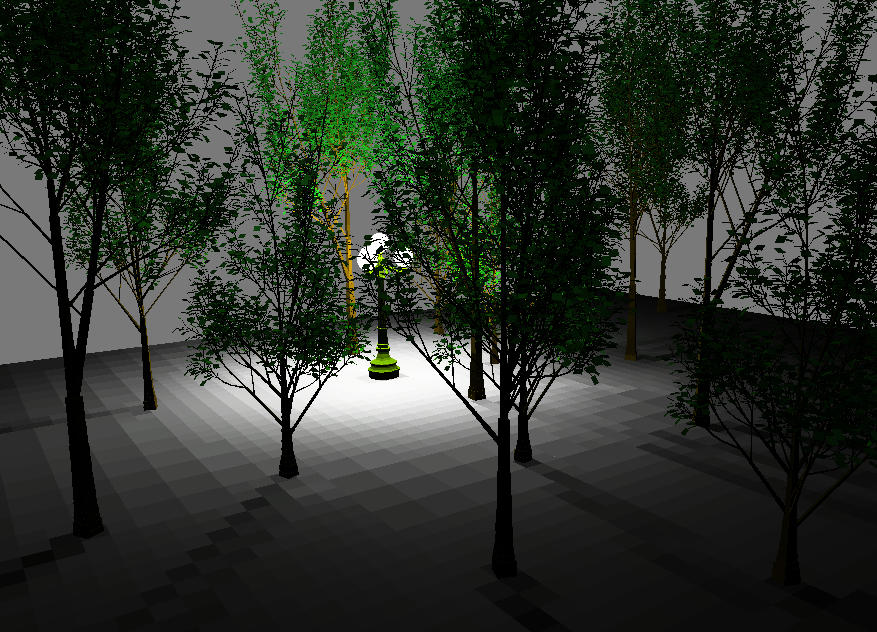
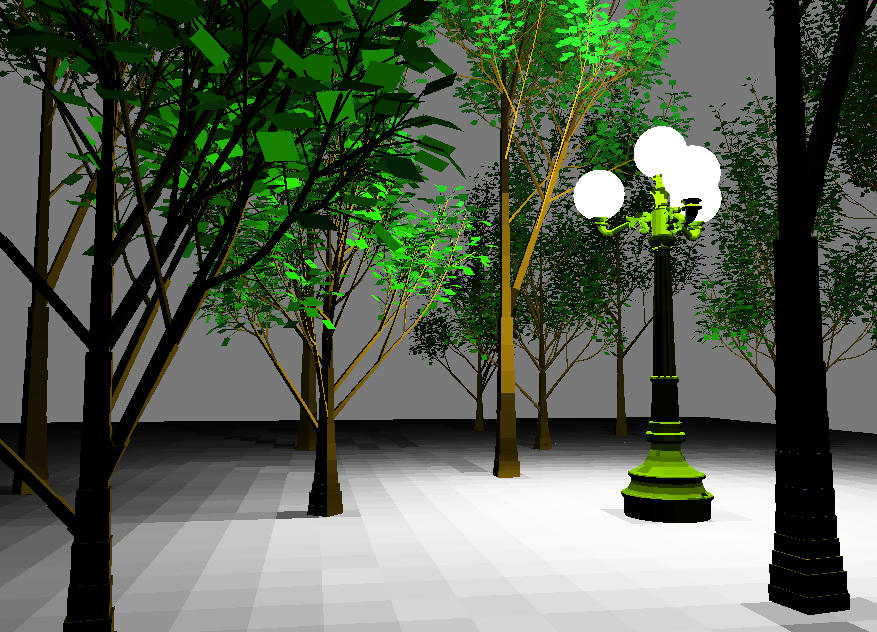
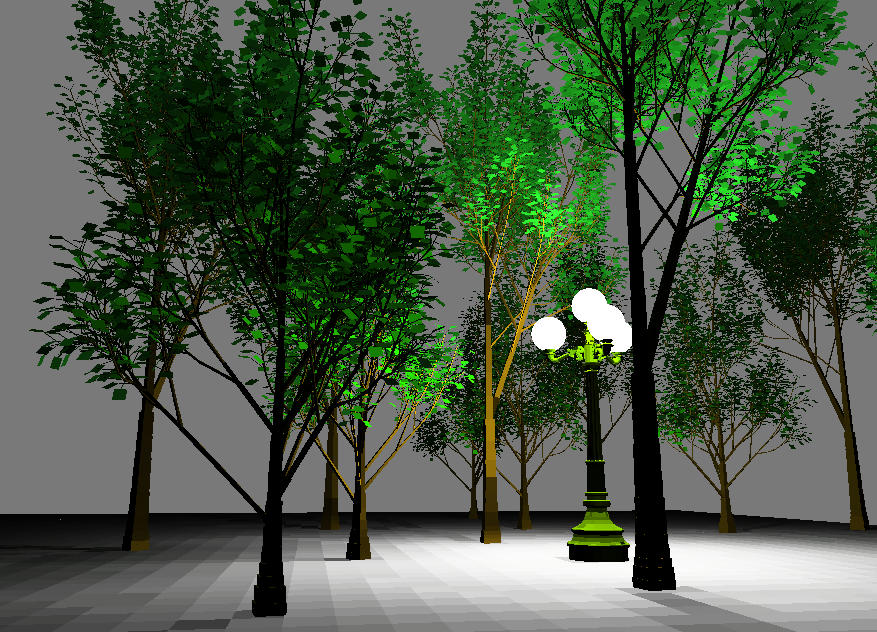
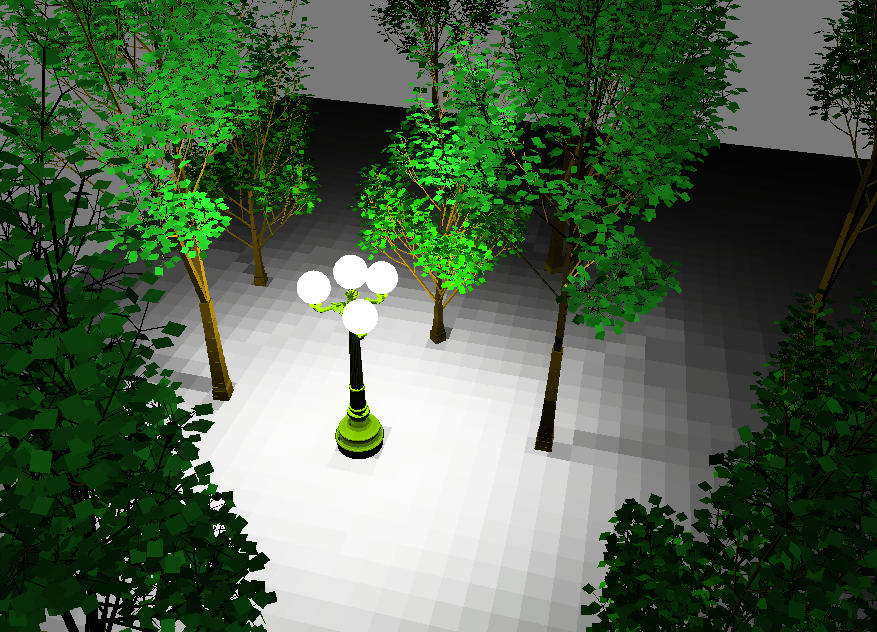
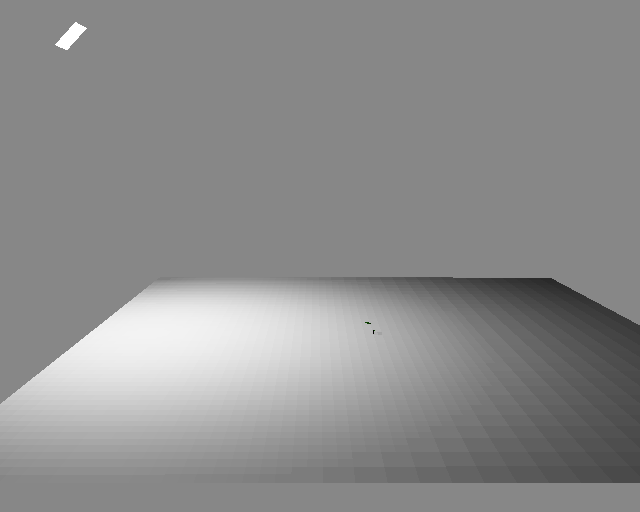
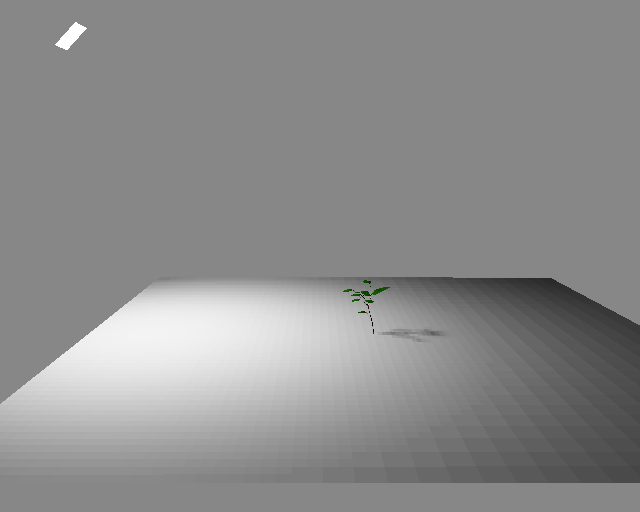

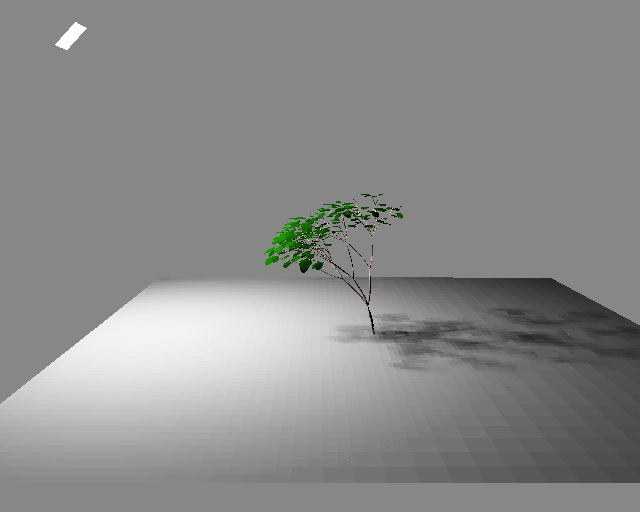
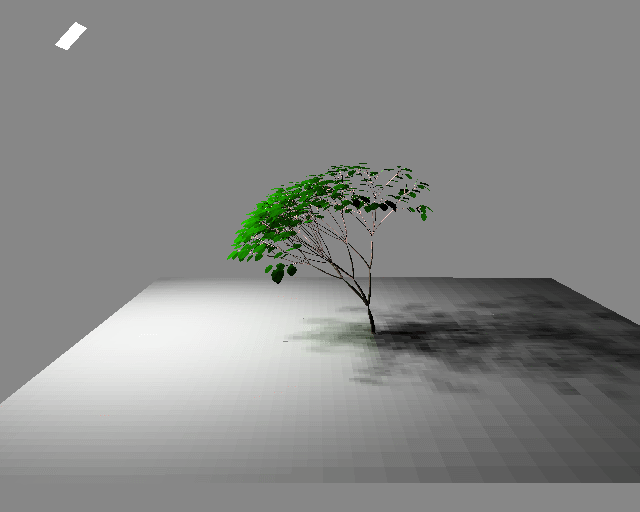
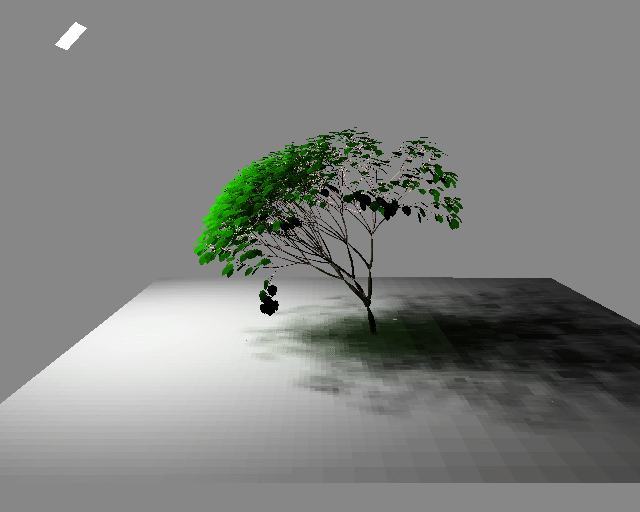
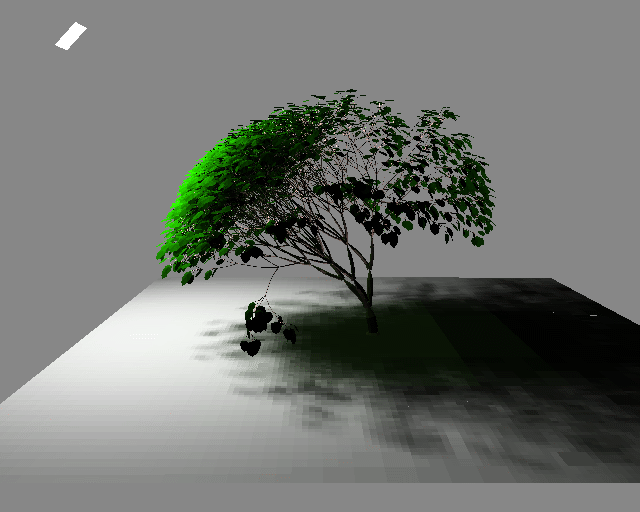

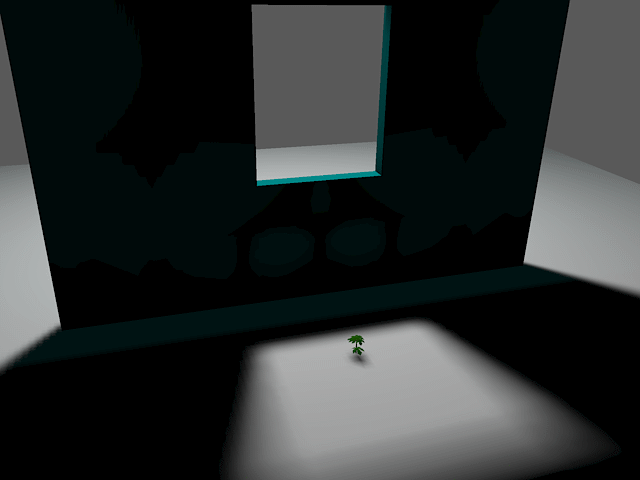
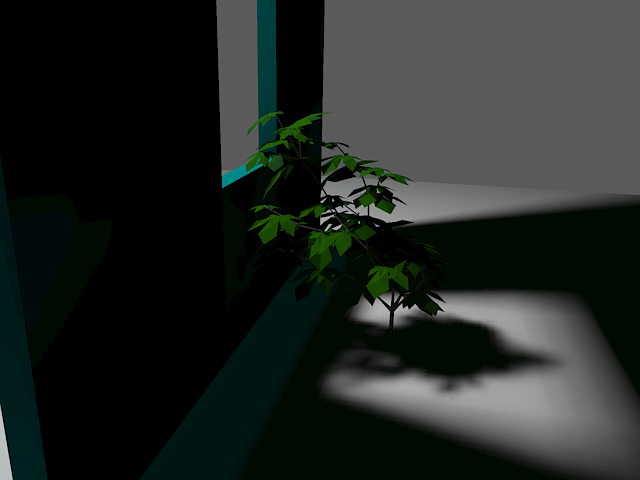
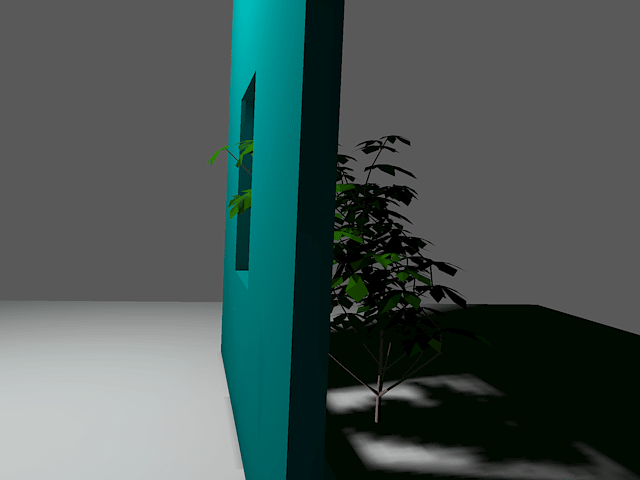

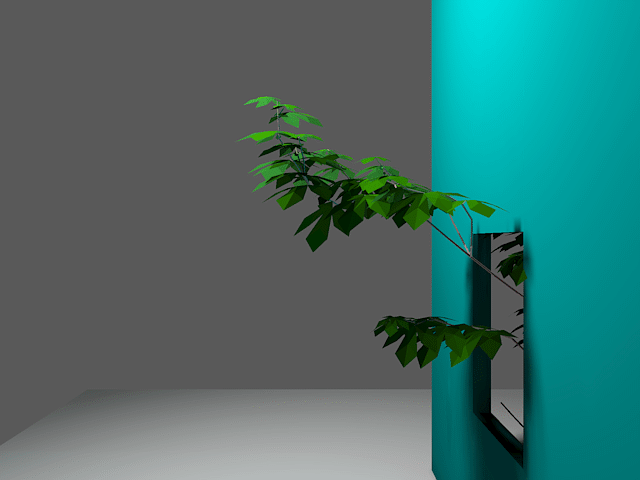
![]()